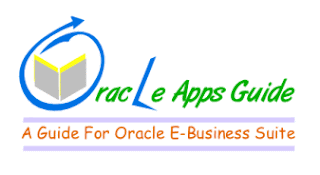Supply chain management (SCM) is the process of planning, implementing, and controlling the operations of the supply chain as efficiently as possible. Supply Chain Management spans all movement and storage of raw materials, work-in-process inventory, and finished goods from point-of-origin to point-of-consumption.
The definition one American professional association put forward is that Supply Chain Management encompasses the planning and management of all activities involved in sourcing, procurement, conversion, and logistics management activities. Importantly, it also includes coordination and collaboration with channel partners, which can be suppliers, intermediaries, third-party service providers, and customers. In essence, Supply Chain Management integrates supply and demand management within and across companies.
Some experts distinguish Supply Chain Management and logistics, while others consider the terms to be interchangeable.
Supply Chain Management is also a category of software products.
Supply chain event management (abbreviated as SCEM) is a consideration of all possible occurring events and factors that can cause a disruption in a supply chain. With SCEM possible scenarios can be created and solutions can be planned.
Supply Chain Management
Activities/functions
Supply chain management is a cross-functional approach to managing the movement of raw materials into an organization, certain aspects of the internal processing of materials into finished goods, and then the movement of finished goods out of the organization toward the end-consumer. As organizations strive to focus on core competencies and becoming more flexible, they have reduced their ownership of raw materials sources and distribution channels. These functions are increasingly being outsourced to other entities that can perform the activities better or more cost effectively. The effect has been to increase the number of organizations involved in satisfying customer demand while reducing management control of daily logistics operations. Less control and more supply chain partners led to the creation of supply chain management concepts. The purpose of supply chain management is to improve trust and collaboration among supply chain partners, thus improving inventory visibility and improving inventory velocity.
Several models have been proposed for understanding the activities required to manage material movements across organizational and functional boundaries. SCOR is a supply chain management model promoted by the Supply Chain Management Council. Another model is the SCM Model proposed by the Global Supply Chain Forum (GSCF). Supply chain activities can be grouped into strategic, tactical, and operational levels of activities.
Strategic
- Strategic network optimization, including the number, location, and size of warehouses, distribution centers and facilities.
- Strategic partnership with suppliers, distributors, and customers, creating communication channels for critical information and operational improvements such as cross docking, direct shipping, and third-party logistics.
- Product design coordination, so that new and existing products can be optimally integrated into the supply chain, load management
- Information Technology infrastructure, to support supply chain operations.
- Where-to-make and what-to-make-or-buy decisions
- Aligning overall organizational strategy with supply strategy
Tactical
- Sourcing contracts and other purchasing decisions.
- Production decisions, including contracting, locations, scheduling, and planning process definition.
- Inventory decisions, including quantity, location, and quality of inventory.
- Transportation strategy, including frequency, routes, and contracting.
- Benchmarking of all operations against competitors and implementation of best practices throughout the enterprise.
- Milestone payments
Operational
- Daily production and distribution planning, including all nodes in the supply chain.
- Production scheduling for each manufacturing facility in the supply chain (minute by minute).
- Demand planning and forecasting, coordinating the demand forecast of all customers and sharing the forecast with all suppliers.
- Sourcing planning, including current inventory and forecast demand, in collaboration with all suppliers.
- Inbound operations, including transportation from suppliers and receiving inventory.
- Production operations, including the consumption of materials and flow of finished goods.
- Outbound operations, including all fulfillment activities and transportation to customers.
- Order promising, accounting for all constraints in the supply chain, including all suppliers, manufacturing facilities, distribution centers, and other customers.

Comments
Post a Comment